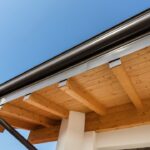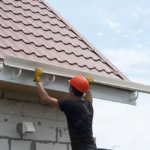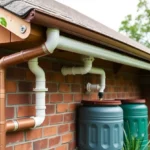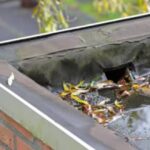A leaking roof is a common issue faced by many homeowners. It can cause significant damage if not addressed promptly. Learning how to fix a roof leak can help you protect your home from water damage. In this article, we’ll guide you through the steps to identify the source of the leak, the tools you’ll need, and the techniques for repairing different types of roof leaks.
Addressing a roof leak might seem daunting, but with a little knowledge and effort, you can fix the problem yourself. We’ll also discuss preventive measures to avoid future leaks.

Identifying the Source of the Leak
Understanding the Signs
Before you can fix a leak, you need to find its source. Common signs of a roof leak include water stains on ceilings, mold or mildew growth, and drips or puddles inside your home. The presence of these signs suggests water is entering your home through the roof.
Inspecting Your Roof
To identify where the water is penetrating your roof, perform an inspection. Check for loose shingles, cracked flashing, or clogged gutters. Pay attention to areas around chimneys, skylights, and roof vents, as these are common entry points for water.
Use a flashlight when inspecting the attic and look for dark spots, stains, or light coming through the roof. This will help you pinpoint the area that requires repair.
Gathering the Necessary Tools and Materials
Before you begin repairing the leak, gather the necessary tools and materials, including:
- Ladder
- Roofing nails
- Hammer
- Caulking gun
- Roofing cement
- Roofing tape
- Replacement shingles or tiles
- Safety gear (gloves, safety goggles, and non-slip shoes)
Repairing Different Types of Roof Leaks
Fixing Shingle Leaks
If your roof has asphalt shingles, inspect for missing or damaged shingles. Replace them by carefully lifting the surrounding shingles and removing the nails of the damaged piece. Slide a new shingle into place and secure it with roofing nails. Apply roofing cement to seal the edges.
Repairing Flashing Issues
Flashing is the metal strip that seals joints between the roof and other structures, like chimneys or vents. If flashing is damaged, water can seep through. To fix it, remove the old flashing and apply new flashing in the area, ensuring a tight fit. Seal it with roofing cement to prevent leaks.
Addressing Gutter Problems
Clogged or damaged gutters can cause water to overflow and find its way inside your home. Regularly clean your gutters to prevent blockages, and repair any leaks with gutter sealant or by replacing damaged sections.
Sealing Roof Vents
Water can enter through gaps around roof vents. Inspect the rubber boot that surrounds the vent pipe and replace it if it’s cracked or damaged. Apply a generous amount of roofing cement to the base of the vent to seal any openings.
Preventing Future Roof Leaks
Regular Inspections
Conduct regular roof inspections, especially after storms or heavy winds. Checking your roof twice a year can help you identify potential problems early.
Maintaining Your Roof
Keep your roof in good condition by cleaning debris, trimming overhanging trees, and replacing damaged materials promptly. Regular maintenance can extend the life of your roof and prevent leaks.
When to Call a Professional
If the leak persists despite your efforts or if you’re uncomfortable doing the repair work yourself, it’s time to call a professional. Professional roofers have the skills and tools needed to handle complex repairs safely and efficiently.
Check out [this extensive guide](https://www.bobvila.com/articles/roof-replacement-cost) on when to replace your roof for further insights.
Conclusion
Learning how to fix a roof leak is an invaluable skill for any homeowner. By identifying the source of the leak, gathering the necessary tools, and following the repair steps, you can protect your home from water damage. Regular maintenance and inspections will help prevent future leaks, ensuring the longevity of your roof.
For more roofing tips and information, visit [How to Choose a Roof Construction Company](https://roof-home.com/how-to-choose-a-roof-construction-company/).

FAQs
Can I fix a roof leak myself?
Yes, many roof leaks can be fixed by homeowners with the right tools and knowledge. However, if the damage is extensive or you’re uncomfortable with repairs, it’s best to hire a professional.
How can I tell if my roof has a leak?
Signs of a roof leak include water spots on your ceiling, damp walls, or mold growth. Inspecting your roof for damaged shingles, cracked flashing, or clogged gutters can help identify the source of the leak.
How often should I inspect my roof for leaks?
Inspect your roof at least twice a year, preferably in spring and fall. Additionally, check for damage after severe weather events.
This article contains affiliate links. We may earn a commission at no extra cost to you.







